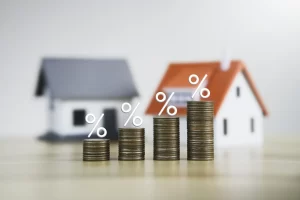Australia’s real estate market is known for its dynamic nature, marked by fluctuating property prices and varying demand across regions. Over recent years, many cities have seen substantial increases in property values, making it a challenging landscape for prospective homebuyers. While homeownership remains a significant goal for many Australians, understanding how much you can afford is crucial to making informed decisions.
In assessing mortgage affordability, it’s essential to consider not just the purchase price of a property but also the ongoing costs associated with homeownership. This includes not only mortgage repayments but also property taxes, maintenance costs, and insurance. The affordability landscape can differ significantly depending on whether you’re looking at metropolitan areas or regional centers, and understanding these nuances can help buyers navigate the complexities of the Australian property market effectively.
- Calculate Your Income and Expenses
Start by evaluating your total household income. This should include salaries, bonuses, and any other sources of income. Next, list your monthly expenses, including essentials like utilities, groceries, transportation, and discretionary spending. This exercise will help you understand your current financial situation and identify how much you can comfortably allocate toward a mortgage each month.
- Understand Your Borrowing Capacity
 Your borrowing capacity will largely depend on your income, credit score, and existing debts. Lenders typically use a formula to assess how much you can borrow, considering your income and expenses. Many banks offer online calculators to estimate this figure, providing a quick and useful tool for potential buyers. Generally, lenders recommend that your mortgage repayments should not exceed 30% of your gross monthly income.
Your borrowing capacity will largely depend on your income, credit score, and existing debts. Lenders typically use a formula to assess how much you can borrow, considering your income and expenses. Many banks offer online calculators to estimate this figure, providing a quick and useful tool for potential buyers. Generally, lenders recommend that your mortgage repayments should not exceed 30% of your gross monthly income.
- Factor in Additional Costs
When assessing mortgage affordability, it’s important to remember that the purchase price is not the only financial commitment you’ll encounter. Additional costs may include:
Stamp Duty: A state government tax on property purchases that can significantly increase your upfront costs.
Lenders Mortgage Insurance (LMI): If your deposit is less than 20% of the property value, you may need to pay LMI, which protects the lender in case you default on your loan.
Legal Fees: Costs associated with the legal aspects of buying a property.
Inspection Fees: Fees for building and pest inspections to ensure the property is in good condition.
- Consider Interest Rates
Interest rates can greatly affect your mortgage repayments. In Australia, mortgage rates can vary based on the type of loan you choose—fixed or variable. Fixed rates offer certainty as your repayments remain the same for a set period, while variable rates may fluctuate over time. Understanding how these rates can impact your budget will help you make an informed decision regarding your mortgage.
- Prepare for Future Financial Changes
Consider your financial goals and potential life changes that could impact your ability to pay your mortgage. Will you be starting a family, changing jobs, or planning for retirement? Assessing these factors will help ensure that your mortgage remains affordable throughout the life of the loan.
- Seek Professional Advice
If you’re unsure about your calculations or the mortgage process, consulting a financial advisor or mortgage broker can be beneficial. They can provide personalized insights based on your financial situation and help you navigate the complexities of the Australian mortgage landscape.
Assessing your mortgage affordability is a critical step in your journey to homeownership in Australia. By carefully evaluating your income, expenses, and the various costs associated with buying a property, you can make informed decisions that align with your financial goals. Remember, understanding your budget today can lead to a more secure and enjoyable homeownership experience tomorrow.
